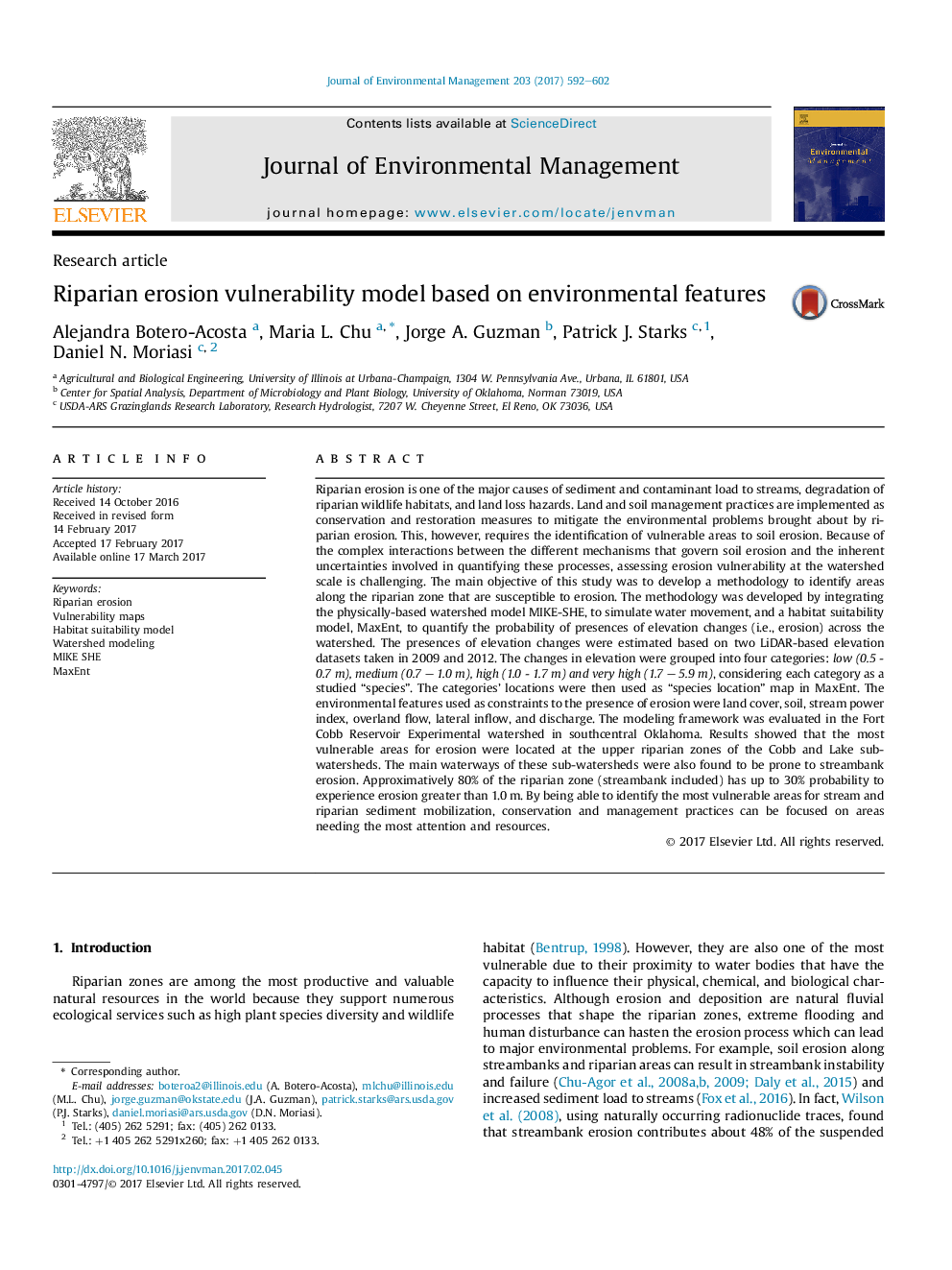| کد مقاله | کد نشریه | سال انتشار | مقاله انگلیسی | نسخه تمام متن |
|---|---|---|---|---|
| 5116545 | 1378099 | 2017 | 11 صفحه PDF | دانلود رایگان |
- Integration of hydrologic and habitat suitability models.
- Identification of areas prone to riparian erosion at watershed scale.
- Evaluation of erosion vulnerability using probabilistic approach.
- Use of principle of maximum entropy for erosion assessment.
- Physically-based hydrologic model representation of water movement.
Riparian erosion is one of the major causes of sediment and contaminant load to streams, degradation of riparian wildlife habitats, and land loss hazards. Land and soil management practices are implemented as conservation and restoration measures to mitigate the environmental problems brought about by riparian erosion. This, however, requires the identification of vulnerable areas to soil erosion. Because of the complex interactions between the different mechanisms that govern soil erosion and the inherent uncertainties involved in quantifying these processes, assessing erosion vulnerability at the watershed scale is challenging. The main objective of this study was to develop a methodology to identify areas along the riparian zone that are susceptible to erosion. The methodology was developed by integrating the physically-based watershed model MIKE-SHE, to simulate water movement, and a habitat suitability model, MaxEnt, to quantify the probability of presences of elevation changes (i.e., erosion) across the watershed. The presences of elevation changes were estimated based on two LiDAR-based elevation datasets taken in 2009 and 2012. The changes in elevation were grouped into four categories: low (0.5 - 0.7Â m), medium (0.7 - 1.0Â m), high (1.0 - 1.7Â m) and very high (1.7 - 5.9Â m), considering each category as a studied “species”. The categories' locations were then used as “species location” map in MaxEnt. The environmental features used as constraints to the presence of erosion were land cover, soil, stream power index, overland flow, lateral inflow, and discharge. The modeling framework was evaluated in the Fort Cobb Reservoir Experimental watershed in southcentral Oklahoma. Results showed that the most vulnerable areas for erosion were located at the upper riparian zones of the Cobb and Lake sub-watersheds. The main waterways of these sub-watersheds were also found to be prone to streambank erosion. Approximatively 80% of the riparian zone (streambank included) has up to 30% probability to experience erosion greater than 1.0Â m. By being able to identify the most vulnerable areas for stream and riparian sediment mobilization, conservation and management practices can be focused on areas needing the most attention and resources.
Journal: Journal of Environmental Management - Volume 203, Part 1, 1 December 2017, Pages 592-602
